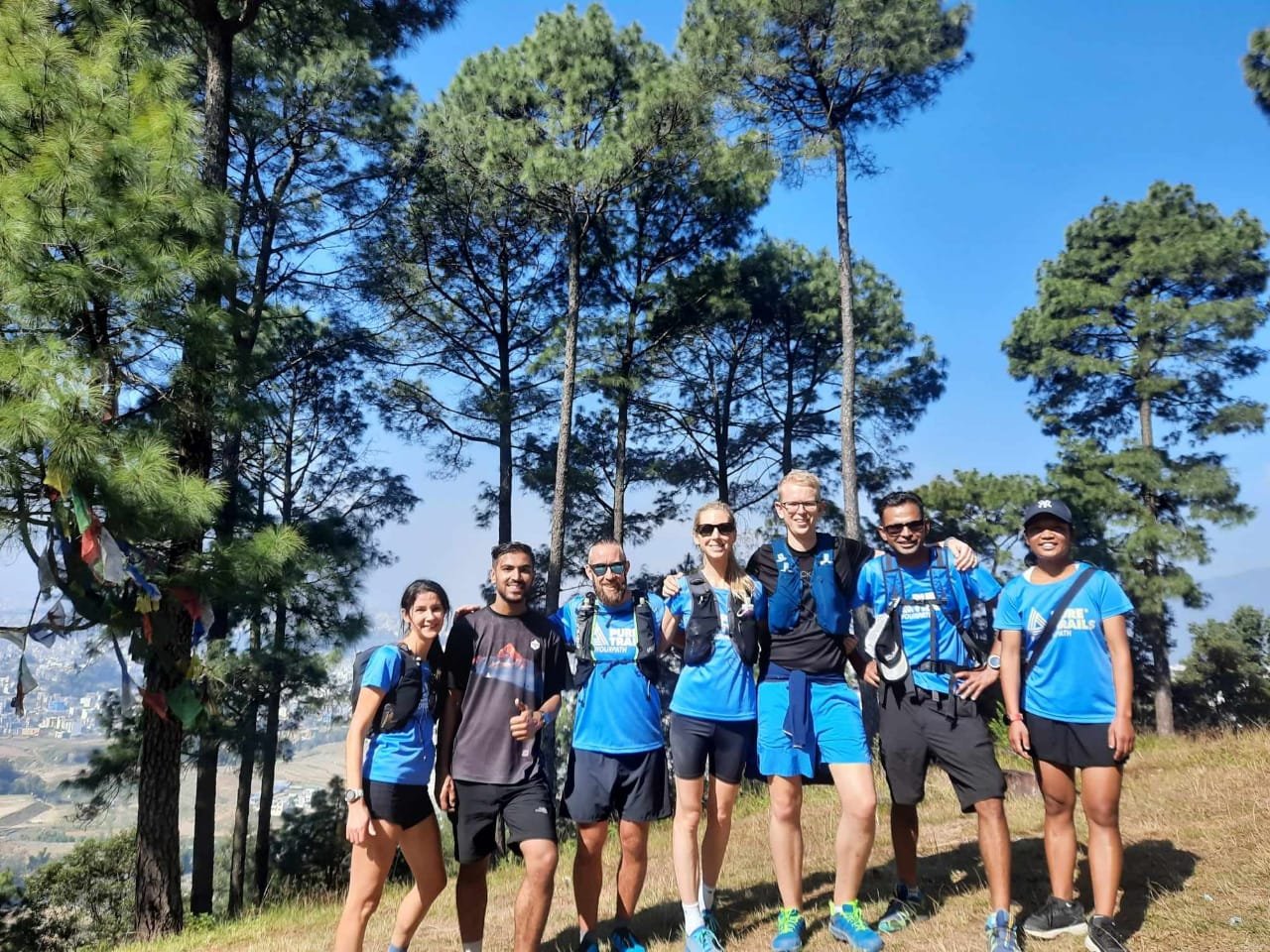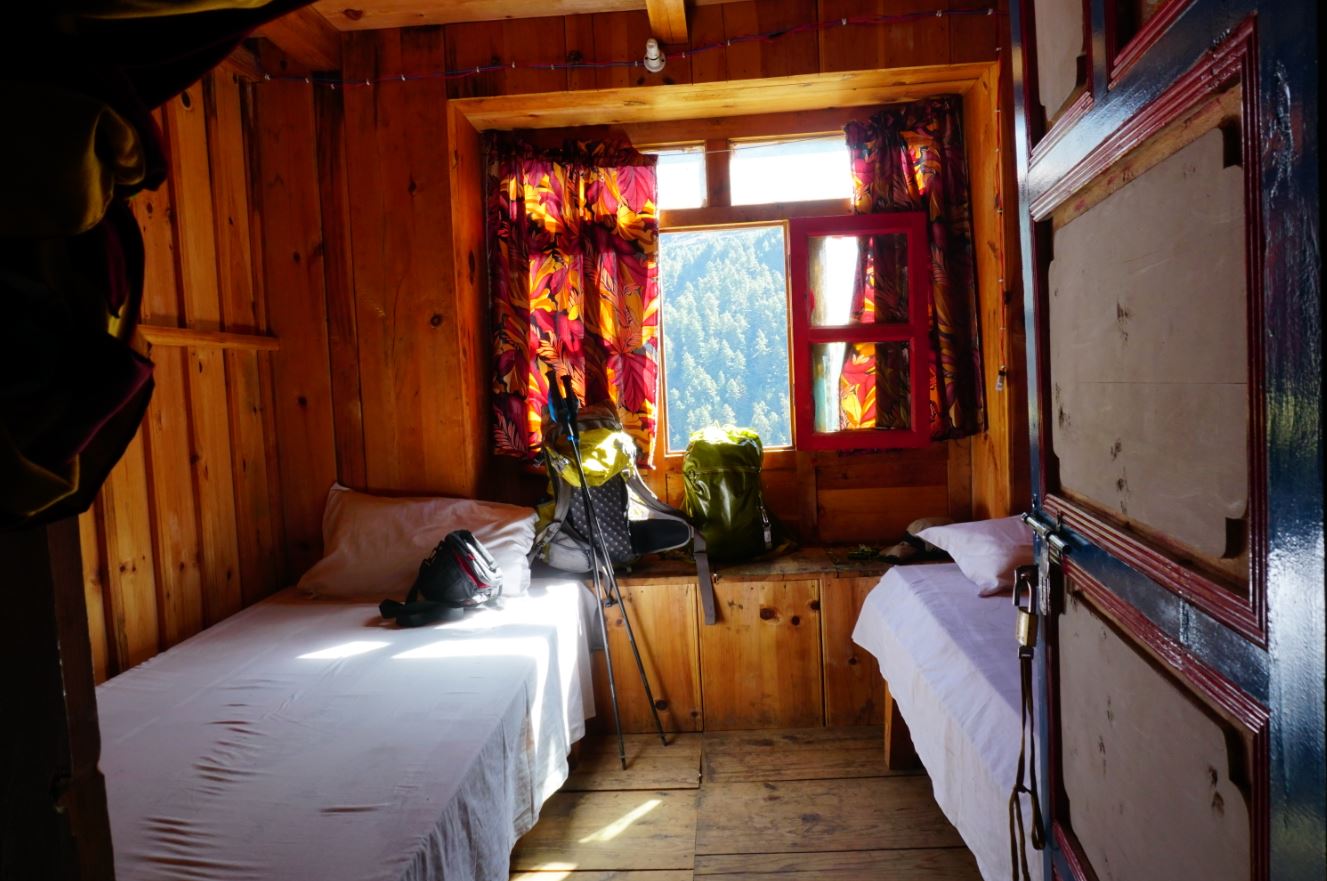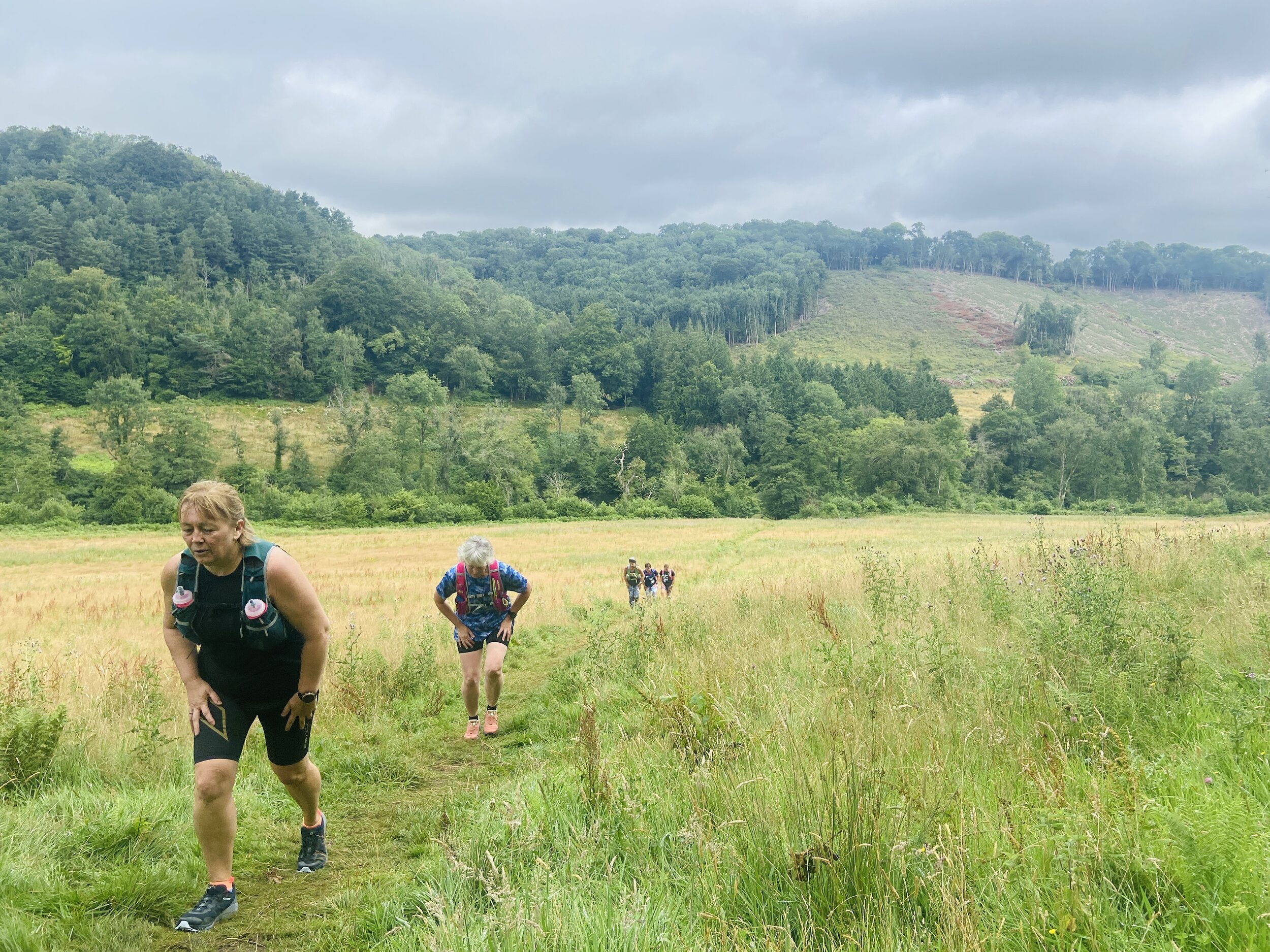TRAIL RUN EVEREST
NEW DATES COMING SOON
PRICE:
£2895PP
BOOK WITH JUST 10% DEPOSIT + PAY OFF IN INSTALLMENTS
SINGLE ROOM UPGRADE: £185 PER PERSON
Would you like a short video explaining more about this trip?
EXPERIENCE OVERVIEW
Join us on an epic trail running adventure like no other as we run on the world’s greatest trail to Everest Base Camp.
Our journey begins in Kathmandu, before flying into Lukla and deep into the mountains from there on in. There is a vast variety of terrain along the way which has everything from great canyons, lush forests that characterise the entry valleys. It doesn’t take us long until we start seeing the huge mountain giants of the Everest Valley.
We have carefully planned the adventure to give appropriate time for acclimatisation and there will certainly be sections of the trail where we hike in favour of running.
We’ll travel each day carrying only light packs, as all of our gear and equipment is carried by our trusted team of porters who are with us for the full duration of the trip.
Alongside the mountains, we’ll be spending some time urban running as we explore the amazing sites, smells and sounds of Kathmandu.
INCLUDES
3 nights accommodation at the Hotel Manang or the Lo Mustang in Kathmandu
1 night at a local guesthouse in Ramechhap
11 nights accommodation in local tea houses (shared bathroom) when on the trail
Welcome and farewell dinner in Kathmandu
Fully-supported trail running adventure
Full board throughout the trail run, including dinner in Ramechhap
All transfers including arrival and departure from the airport
3:1 Runners to Guide Ratio
2:1 Runners to Porter Ratio
Conservation and National Park Fees/Permits
Local staff Insurance
11 days of trail running on magnificent trails
SHARE THIS TRIP
ITINERARY
+ DAY 1: ARRIVE INTO KATHMANDU
+ DAY 2: EXPLORE KATHMANDU. TRANSFER TO RAMECHHAP
+ DAY 3: FLY LUKLA - BEGIN THE TRAIL TO PHAKDING
+ DAY 4: TRAIL RUN TO NAMCHE BAZAAR
+ DAY 5: ACCLIMITISATION DAY IN NAMCHE
+ DAY 6: ONWARDS TO PHORTSE
+ DAY 7: PHORTSE TO DINGBOCHE
+ DAY 8: EXPLORE AND ACCLIMITISE IN DINGBOCHE
+ DAY 9: FROM DINGBOCHE TO LOBOUCHE
+ DAY 10: UP TO EVEREST BASE CAMP, VIA GORAK SHEP
+ DAY 11: EVEREST SUNRISE - PANGBOCHE
+ DAY 12: DOWNHILL RUNNING TO NAMCHE
+ DAY 13: RETURN TO LUKLA
+ DAY 14: FLY LUKLA - KATHMANDU
+ DAY 15: KATHMANDU
+ DAY 16: HOMEWARD BOUND
Would you like to talk to a Pure Trails team member to learn more about this trip?
OUR ITINERARY
DAY 1 | ARRIVE INTO KATHMANDU
Welcome to Kathmandu!
Arrive at Kathmandu International Airport, process immigration and make your way through to the arrivals hall where your transfer will be waiting.
Check into your room and freshen up after your long journey.
We'll arrange a time to all meet up over coffee which gives us a chance to meet with one another and have a briefing about our trail running adventure.
If time allows and we will head out for an easy walk around to get our bearings in the capital.
Back to the hotel with time to chill. Drinks in the bar before heading out for a welcome dinner in one of Kathmandu's best local restaurants.
DAY 2 | EXPLORE KATHMANDU - RAMECHHAP
Trail Running: Approx. 10km
We’ll ease our way into Nepali life with a relaxed breakfast before heading out to explore this curious capital with ancient treasures dotted amongst the chaos and traffic of a bustling city.
We’ll head out out on an easy paced trail run to see some of the sites from Kathmandu’s Durbar Square in the adventurous Thamel District to the Swayambhunath Monkey Temple.
Heading back to our hotel later to do a kit check before checking out and taking a group land transfer to Ramechhap which is 4 hours away. We head to Ramechhap as this is the Gateway to the Everest region.
Arrive at our guesthouse with time to relax and prepare for heading into the mountains tomorrow.
DAY 3 | FLY TO LUKLA - BEGIN THE TRAIL TO PHAKDING
Trail Running: Approx. 10km | 1.5 hours | 280m +
Today is the day we finally head into the mountains. We’ll leave for the airport after breakfast and take our small domestic flight to Lukla - the gateway to the Everest region of Nepal.
It’s one of the most exciting flights in the world and as you arrive in the Himalayan foothills.
Landing, we'll be met by our local staff and hit the Everest trail.
Our journey today follows an easy, undulating trail passing through small villages and wide valley bottoms as we head towards the village of Phakding.
DAY 4 | TRAIL RUN TO NAMCHE BAZAAR
Trail Running: Approx. 10km | 3 hours | 1182m +
The trail today it doesn’t take long for us to ascend above the clouds where the true majesty of the Himalayas begins to show on the nearby horizon. Snow-covered mountains, blue skies and sunshine await.
We follow a glacial river where the well-trodden trail continues to climb towards the two famed suspension bridges. It’s a great place to stop and take photos of the prayer flags on the bridge. We then continue up the forested hill before arriving at the Sherpa settlement of Namche Bazaar – a mini- mountain city crammed full of cafes, bakeries, lodges and souvenir shops.
This is our base for 2 nights.
DAY 5 | ACCLIMITISATION DAY IN NAMCHE
The altitude in Namche Bazaar is notable and you may find that it is harder work walking uphill – you are now at 3,445m and we need to have a rest day to help us acclimatise to the altitude.
There is a lot of exploring to be done around Namche Bazaar.
After an easy morning, we will head towards the village of Thame for a an easy run/hike which takes us up to 3,800m and will take around 5 hours in total.
We’ll also checkout the Tenzing Norgay memorial in town which has a blistering view of Everest (which canbe seen), Ama Dablam (6,812m, Lhotse (8,516m) and other huge Himalayan mountains.
DAY 6 | ONWARD TO PHORTSE
Trail Running: Approx. 10km | 4 hours | 900m +
Almost from the start our trail which has superb views of Mt. Everest, Nuptse, Lhotse, Ama Dablam and close-up views of Thamserku on the way to Phortse.
The trail has a few ups and downs along the way, with outstanding scenery at every turn. We will pass through many local villages and begin to head downhill for a short section, crossing the Dudh Kosi glacial river via a suspension bridge until we reach the village of Phortse, our destination for the evening.
DAY 7 | PHORTSE TO DINGBOCHE
Trail Running: Approx. 14km |4.5 hours | 1160m +
The route begins with a very steep climb up a forested hill, passing rhododendron and pine, the area is nicely shaded to help keep us cool.
The slow climb up the hill could take up to 1.5 hours before reaching the Tengboche monastery which sits proudly at the top. The panorama is magnificent with the stunning peaks of Ama Dablam within touching distance.
Tengboche is a great place for us to rest, explore and look inside the monastery.
The trail then descends through trees and alongside a glacial river, slowly climbing above the alpine zone you will notice a sparser look to the landscapes. Yak herders will pass us along the way. Finally climbing the final hill, we arrive at the village of Dingboche.
DAY 8 | EXPLORE & ACCLIMITISE IN DINGBOCHE
When you wake up in Dingboche and look outside you will realise just how close you are to some extraordinarily big mountains. It is astonishing.
We have a rest day reserved for all important acclimatisation, however, there is the option of a walk up to Nangkartshang Peak (5,080m). The walk is nice and slow, taking up to 3 -4 hours to complete and is worth doing to help you adjust to the mountain air. The rewards of the trek are even better views of the surrounding mountains.
Back in the village, there are a handful of cafes and a local cinema screens mountaineering films – usually at 3 pm.
DAY 9 | CONTINUE TO LOBUCHE
Trail Running: Approx. 8km | 3 hours | 650m +
The trail from Dingboche to Lobuche routes via a short ridge climb, before crossing a vast flat plain up the Pheriche valley. We then gradually climb steeply onto a glacial moraine stemming from the Khumbu glacier towards Chukpo Lari, a beautiful but sobering memorial site to those who have died climbing in this part of the Himalayas.
The last part of the trail today follows the western side of the valley until we reach a cluster of small tea houses which marks our arrival into Lobuche. The village can be quite busy given its location and is a popular base for trekkers and climbers
DAY 10 | UP TO EVEREST BASE CAMP, VIA GORAK SHEP
Trail Running: Approx. 13km | 4 hours | 586m +
We have a challenging but incredible day ahead of us as we head towards Everest Base Camp.
Starting early the undulating trail takes us into the Khumbu valley with outstanding views of the high Himalayas surrounding us. Within 2 -3 hours we will reach Gorak Shep where we will have lunch and time to rest before we head towards Everest Base Camp.
The trail then heads over a sandy flat and winds through ice seracs before arriving at Base Camp. At this time of year, major expeditions will be arriving here. We then retrace our tracks back down to Gorak Shep, where we rest for the evening.
DAY 11| EVEREST SUNRISE - DOWN TO PHERICHE
Trail Running: Approx. 16km | 6 - 7 hours | 521m + / 1435m-
Early this morning we climb up to the summit of Kala Patthar (5,545m) which takes 2 -3 hours to walk up. Our reward is the greatest views of Mount Everest as well as the other Himalayan giants of Nuptse, Lhotse and Pumori.
This is a major highlight of our trip, spending time to take in the beauty of our surroundings.
We return to Gorak Shep for lunch and begin our trail back down towards the village of Pheriche, retracing the same trail we made on our way up.
Check into our lodge with time to relax. The Himalayan Rescue Association clinic is well worth a look around too.
DAY 12 | DOWNHILL RUNNING TO NAMCHE
Trail Running: Approx. 20km | 6 hours | 600m + / 1750m-
Departing Pheriche we head downhill for most of the day, retracing our steps via the Tengboche Monastery with a gradual step section once we have crossed the Dudh Kosi.
We then contour along a well-trodden trail which is enjoyable walking until we once again reach the hustle of the bustle of Namche Bazaar.
Check into our tea house with time to relax.
DAY 13 | RETURN TO LUKLA
Trail Running: Approx. 18km | 3 hours | 450m + / 1500m-
Departing Namche Bazaar our trail carries on descending back down through Phakding until we arrive in Lukla. We check into our lodge with a well-deserved afternoon to relax.
DAY 14 | FLY LUKLA TO KATHMANDU
If the weather is fine in Lukla then we will take a morning flight back to Kathmandu which takes around 35 minutes.
Arriving back in Kathmandu we will be met with a private transfer to take us to our hotel with time to relax, and celebrate our amazing journey together.
DAY 15 | KATHMANDU
We have a full day at leisure to relax today with further opportunity to go shopping or to do some further sightseeing around the city yourselves.
Primarily we use this as a buffer day in case of delays or cancellations for flights returning to Kathmandu from Lukla. This helps to minimise the risk of missing your onward international flight back home.
DAY 16 | HOMEWARD BOUND
It’s time to pack up and bid farewell to Nepal. A private transfer is arranged for you back to Kathmandu International Airport in time to connect with your onward flight back home.
WHERE WE STAY
Tea Houses
Tea houses are part of the fabric of rural Nepal – charming, cosy, and serving up hot, tasty local fare to keep you full along the trail.
It must be stressed that tea houses by their nature are simple, rooms often only have twin beds and come with a clean sheet on a mattress and pillowcase. Toilets are almost always shared and are in squat format. Tea houses in the lower valleys will have access to hot water and ‘probably’ a shower, the higher you go the less likely the chances of showering facilities, but you can always buy tubs of hot water for a bucket wash.
We always use the best tea houses in every village. Considering the environment they provide everything you need.
IMPORTANT NOTES
+ HOW TOUGH IS THIS ADVENTURE?
Trail running in Everest, doesn't it sound like paradise? That's because it is!
As you would expect though travelling to one of the highest places on earth brings challenges that you need to be prepared for.
We've purposefully designed this adventure to be accessible to most people. We don't run fast, you'll find we travel as a great group, and we've staged each day to be as manageable as possible.
But you will need to have a good base level of fitness, and be prepared for back-back-back days of being on your feet (remember this is 12 days on the trail). It's not all out running, you'll find it's jogging on the flats, walking all the uphills, and with plenty of stops to soak up the views.
Our groups naturally attract like-minded individuals who want to enjoy stress-free trails, travel at their own pace and spend time with a great group of people in jaw-dropping landscapes.
+ WHAT DO I DO ABOUT FLIGHTS?
You'll need to arrange your flights arriving and departing from Kathmandu Tribhuvan International Airport (KTM).
A whole range of airlines connect this route from all over the world. The usual suspects are Qatar Airlines, Emirates, Turkish, Oman Air and Air India.
You can arrive and depart at any time you need as private transfers are included within the cost of this trip.
+ VISAS?
All travellers to Nepal must hold a valid passport. Your passport must be valid for at least six months beyond your expected departure from Nepal.
An entry visa for Nepal is also required. It can be obtained either online or at the airport upon arrival in Nepal. If you plan to obtain it in Nepal, be sure to bring the current visa fee in cash. You will also need to bring passport photographs with you which are necessary for your visa and trekking/climbing permits.
+ WHAT IS THE TRAIL RUNNING LIKE?
Not only are the mountains spectacular, but the trail runs through a great variety of terrain every step of the way – it is a wonder. Forests and canyons characterize the entry valleys where we will spend our time traversing wide dusty trails at altitudes of 1200 -1800m.
The terrain slowly becomes more mountainous the higher we go, picking our way through large boulder fields and dry plains where gigantic mountains – seemingly in touching distance – surround us. All the while the trail is very obvious as we pass through one charming village after the next.
Bear in mind this is Nepal, there is a lot of uphill travel involved and our journey has been staged carefully to allow us to acclimatise and trail run as we go.
It's important to note that we will spend quite a bit of time hiking, alongside trail running to complement the ever-changing terrain and route as we head deeper into the mountains.
+ WHAT TEMPERATURES CAN I EXPECT?
Temperatures by day can be very warm, particularly due to the strong and direct sunlight at higher altitudes. It can get very cold overnight, early mornings and after dusk.
We've purposefully chosen to go to Everest in April as it represents the best time of year to be in the region. Climatic conditions in the mountains are at their most stable at this time of year, with the highest chance for clear mountain views, particularly in the early morning and evening, and with great underfoot conditions throughout.
That being said, this is Everest and to manage expectations guests should be prepared for all four seasons on this trip. Yes, it can rain, yes it may snow, yes it may be cloudy. As we head higher up the valleys we'll get above the clouds for, hopefully, some incredible views throughout.
+ WHAT ABOUT ALTITUDE?
Altitude and the potential sickness that can come about from it need to be taken seriously. Altitude sickness can develop when you are physically active at high altitudes without having become acclimatised to the lower pressures experience there.
Tolerance ranges widely from person to person. People who are more fit tend to have less trouble with AMS, but that said even very fit people are vulnerable if they ascend too high in a short time frame, without proper acclimatisation.
AMS can affect people at altitudes as low as 2,400m, but serious symptoms are very rare below 3,700m. At 5,000m the amount of oxygen available with each breath is only 55% of that at sea level.
As a matter of course, we have managed this experience carefully to ensure that appropriate levels of daily acclimatisation are included to maximise individual’s adjustment levels.
All of our guides and local staff are trained to recognise the signs of early-onset altitude sickness. Each day you will be given a health check, which includes the use of an oximeter to check your oxygen saturation levels, as well as checking your pulse.
Our guides are highly experienced in working at altitude and know how to look after our team members.
It is vitally important that you share information about your health and any symptoms you may experience on this adventure. Failure to do so not only puts yourself at risk but your fellow team members as well.
+ A TYPICAL DAY
A typical day on the experience will see our porters leaving our teahouse each morning around 05:00, transporting your soft luggage to our destination for that day.
By the porters taking our luggage means we can set out with our light running packs, carrying everything we need and to make the experience more enjoyable. It's also worth stressing we salary each of our porters giving them a proper income.
On average we will ‘run’ between 2-6 hours a day covering mileage ranging between 10-25km. I use the term running loosely, the experience is not a race and we want everybody to get maximum enjoyment from the experience. Run as fast or as slow as you feel, jog or walk it is entirely up to you. We have a good ratio of guides to runners that allow everybody to travel without pressure.
We will leave our teahouse after breakfast to depart at 08:00. Leaving in the morning is the best time as the weather is almost always clear and the temperatures are lower. This is when the day is at its most comfortable and the morning light is perfect for photos.
We will make stops for drinks and use the local facilities as and when we need to, with a scheduled stop for lunch around noon. Our lunch stops will be a sit down to eat a hot meal and we will provide provisions of Tail Wind and energy snacks for you to top up as you see fit.
We will reach our daily destination around 14:00-15:00. Checking into our tea house with time to relax and freshen up. Explore local villages, have a briefing over dinner and be tucked up in our beds usually by 20:00, as is the way in the mountains, for us to get some well-deserved rest before our departure the following morning.
+ WHAT ABOUT DIETARY?
Kathmandu has a wide variety of restaurants, everything from Italian, Indian, American and everything in between. There is something here to suit all taste buds and dietary requirements.
Dhal Bhat is the national dish of Nepal which local people eat twice a day. Dhal Bhat is a wholesome and tasty meal, served thali style with rice, dhal lentils, fried local vegetables, and local chilli with a poppadum or cracker. Dhal Bhat is served almost as much as you can eat and you will continually be asked if you would like more of anything once your plate is empty.
In the mountains, Dhal will feature heavily. The good news is to save you from monotony local menus can be quite varied and you will find dishes like macaroni, noodle soups and even pizzas being offered in even the remotest of places.
For vegetarians, the mountains of Nepal are a wonder. Fresh vegetables grow everywhere, and meat is rarely offered given the importance placed on local poultry, cows and yaks.
Gluten and lactose intolerances can be catered for. Please do let us know so that we can plan appropriately for you in advance.




























